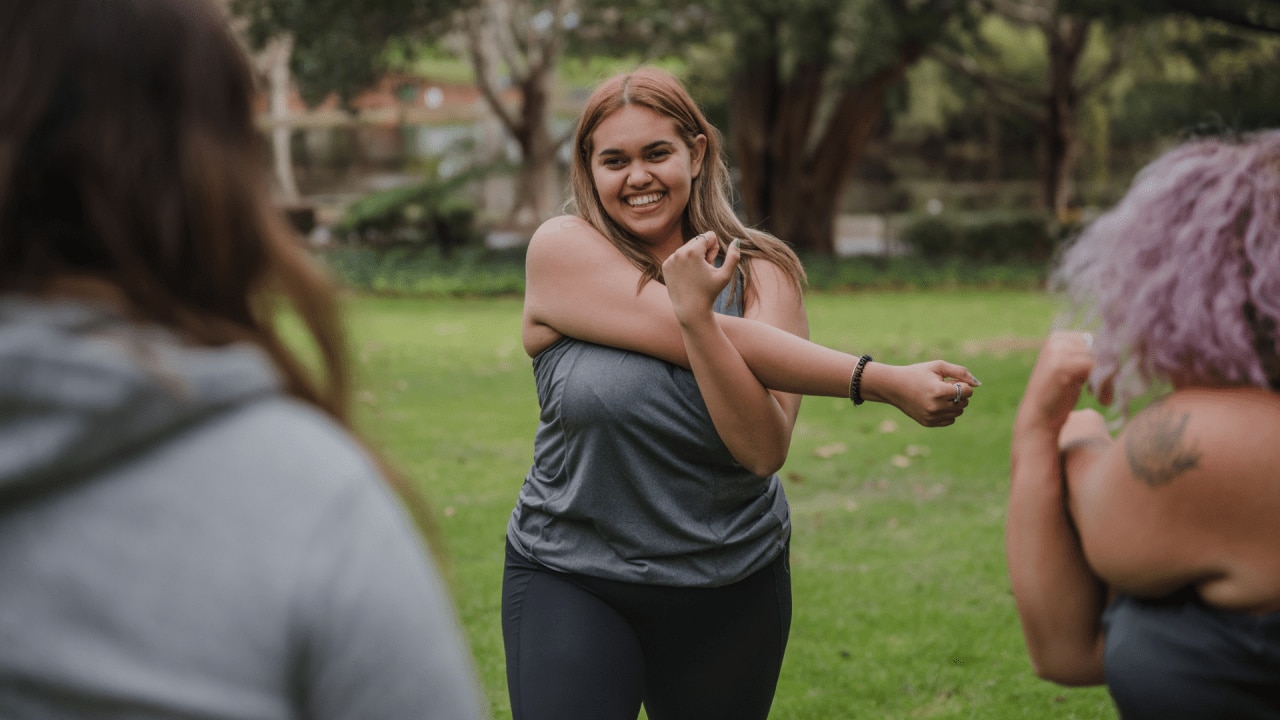
Most basic healthcare services that the average Australian takes for granted are not available to Indigenous people in remote communities. Here are some ways the Voice referendum could help improve Aboriginal health outcomes.
In our era of instant gratification, we have access to the weird and wonderful (as well as the most mundane) right at our fingertips. We can turn on the tap for water, access fresh vegetables within minutes, and make a doctor’s appointment with ease.
Yet, there’s a part of Australia that struggles with these very basics. Imagine these taken-for-granted facilities as luxuries; it’s hard to, right?
Nyamal woman Georgie Corrie, who works as a nurse in remote Aboriginal communities in the Northern Territory, sheds light on this overlooked reality. In an interview with Felicity Harley on a recent episode of Healthy-ish, Corrie emphasises how our everyday comforts remain faraway fantasies for Indigenous people in remote communities. „There are challenges we see [here] that aren’t challenges in major cities and for non-Indigenous Australians,” says Corrie.
But change might be on the way. As early voting for the Indigenous Voice to Parliament referendum on October 14 begins this week, there is a hopeful curiosity in the air: What does this entail for the health and wellbeing of Indigenous people?
Corrie’s experience offers profound insights. She’s witnessed the deep disparities firsthand since her pre-graduate days at the Royal Children’s Hospital in Melbourne, where she encountered young Indigenous children, some as young as five years old, flown in from the territory to undergo open-heart surgeries for preventable conditions like rheumatic heart disease.
Many Indigenous people are airlifted to Adelaide, Melbourne, Brisbane, or Sydney as a last resort in an attempt to treat conditions that could have been nipped in the bud by preventable care.
“We really are navigating challenges of geography,” Corrie explains. Despite hosting only one per cent of Australia’s population, Corrie notes that the Northern Territory is larger than NSW, Victoria, and Tasmania combined. This makes healthcare delivery significantly „harder“ than in metropolitan areas.
The repercussions of increased difficulty in obtaining healthcare are significant. „When it comes to cervical cancer, Indigenous Australians are 2.5 times more likely to develop it, and 3.8 times more likely to die from it,“ says Corrie, adding their five-year survival rate is 56 per cent, compared to 72 per cent for non-Indigenous Australians.
Corrie’s experience managing clinics in the bush has revealed that patients can go for weeks without seeing a doctor, with visits as infrequent as once a month. „There were times I was without a doctor for six weeks,“ she says.
A lack of access to preventative treatment is also a significant impediment to favourable health outcomes. Using breast cancer as an example, she explains that Indigenous Australian women are „1.2 times more likely to die from breast cancer because they don’t have access to screening participation.“
„Our patient-assisted travel scheme won’t cover mammograms,“ Corrie adds.
How can the Voice help? Corrie feels that current health outcomes reflect the absence of a local, grassroots voice that actually understands the reality on the ground. If enshrined in the constitution, this Voice ensures that „policymakers from Canberra and capital cities, who have never been out to a remote community aren’t making decisions, writing policy or legislation, without the input of that community,“ Corrie explains.
She emphasises the significance of care continuity, such as ensuring that an expecting woman sees the same healthcare professional throughout her pregnancy. Corrie proposes „developing First Nations people in the workforce so they feel supported and have a cultural say on the experience.“
Corrie’s stance is simple yet powerful: „When we listen to the community, we get better outcomes… It’s their health service. What do they feel is missing or lacking?“ Drawing from her enriching experiences, she believes that sometimes, the solutions are straightforward and within grasp, just waiting to be implemented and voiced.